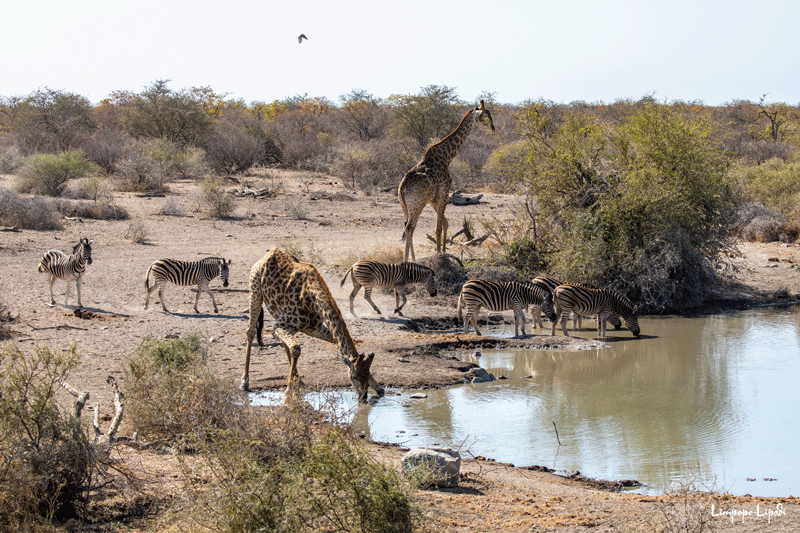The giraffe, abundantly present in Limpopo-Lipadi, is the tallest animal in the world and its silhouette is unmistakable: long and tapered legs, a massive body and a very long neck. Unfortunately, the giraffe’s legs are too long, or its neck is too short to reach the ground, depending on your point of view. Eating is not a problem because it feeds on leaves and twigs from the trees that only it, with its 5m height, can reach. But, bending over to drink is really complicated.
You may have noticed that giraffe must take in a very awkward and uncomfortable position to drink from waterholes. They must widen their front legs and bend their knees a little. Once they’ve taken in this strange position, they can lower their neck to the water. This isn’t just an uncomfortable position, it’s also very dangerous because it makes them vulnerable to predator attacks when they’re bent over this way with their legs spread. For this reason, giraffe always drinks in groups and always take turns; while one giraffe drinks, the others lookout for predators.

Giraffe are also exposed to another risk when they bend over this way, their own brain. When giraffe lower their heads to the ground, they risk being exposed to a sudden increase in blood pressure, that could cause them to collapse and pass out. To avoid this problem, nature has equipped the giraffe with an incredible internal structure. Their jugular veins have valves that block the return flow of the blood, and the blood vessels have elastic walls that dilate and shrink to manage the change in blood flow. These one-way valves and the elasticity of the veins prevent blood from flowing too quickly to the brain when the giraffe lowers to drink. So, next time you watch giraffe drinking from the waterholes, remember all of the mechanics that go into something as simple as quenching its thirst.
